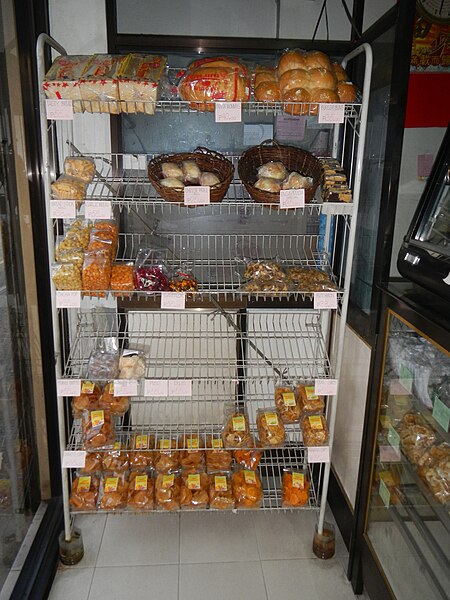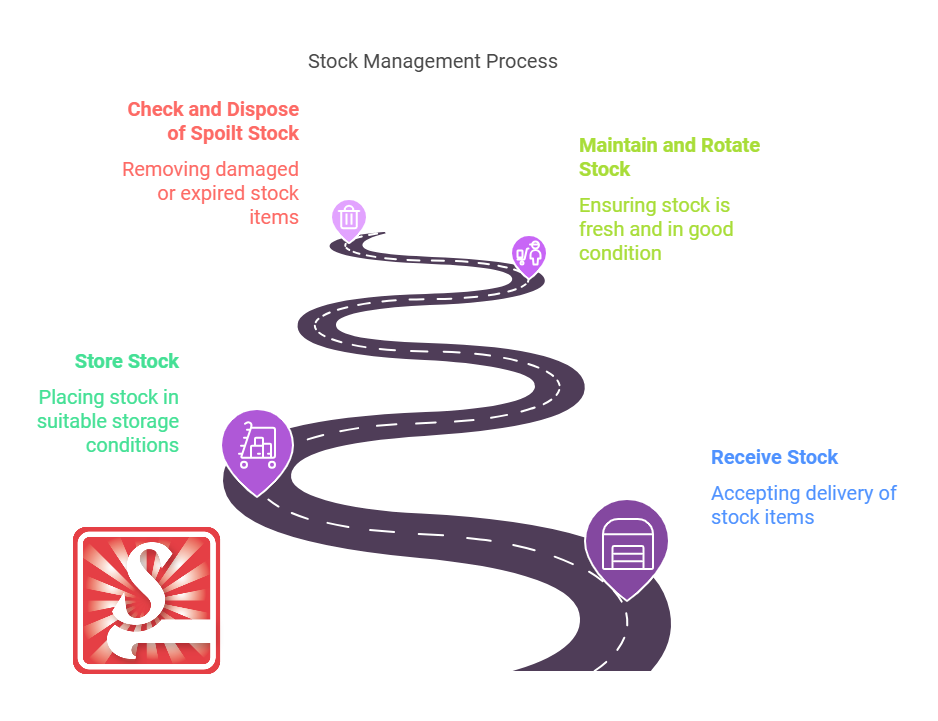Streamlining Stock Management: Organisational Procedures for Receiving, Storing and Maintaining Stock in Hospitality and Catering
Posted by SkillMaker in Jan, 2025
What is a concise description of organisational procedures for receiving, storing and maintaining stock?

Organisational procedures for receiving, storing, and maintaining stock within hospitality and catering environments are structured guidelines ensuring the accuracy, safety, and efficiency of stock management processes. These procedures cover receiving deliveries, inspecting stock quality, appropriate storage conditions, inventory monitoring, and stock rotation to maintain optimal freshness and availability.
Why do people in enterprises need organisational procedures for receiving, storing and maintaining stock?
In enterprises, having well-defined procedures for receiving, storing, and maintaining stock is crucial to ensure operational efficiency and prevent financial loss. These procedures help maintain product quality, reduce waste, ensure regulatory compliance, and improve customer satisfaction by always having fresh, ready-to-use ingredients. They also streamline operations, which is essential for meeting service demands in busy hospitality environments.
“Effective stock management in hospitality safeguards the quality, reduces waste, and ensures seamless service by maintaining a reliable supply chain.”
What are the key components or elements of organisational procedures for receiving, storing and maintaining stock?
Key components include:
- Receiving Stock: Verifying delivery against orders, inspecting quality, and ensuring accurate documentation.
- Storage Practices: Ensuring correct storage temperatures and conditions are maintained to maximize shelf life.
- Stock Rotation: Employing First-In-First-Out (FIFO) to use older stock first, reducing spoilage.
- Inventory Monitoring: Regular checks and balances to record discrepancies and ensure optimum stock levels.
- Record Keeping: Maintaining accurate records for inventory management and auditing purposes.
What key terms, with descriptions, relate to organisational procedures for receiving, storing and maintaining stock?

Registered Trademark®
- Inventory Management: Systematic tracking of stock levels to ensure supply meets demand without overstocking.
- FIFO (First-In-First-Out): A method used to ensure that older stock is used before new stock, minimizing waste.
- Stocktake: The process of counting inventory to verify records and detect discrepancies.
- Cold Chain: Ensuring perishable items are kept in controlled environments to maintain freshness.
- Perpetual Inventory System: Continuously updates inventory records, often with technology integration.
Who is typically engaged with operating or implementing organisational procedures for receiving, storing and maintaining stock?
Roles such as stockroom managers, inventory controllers, kitchen managers, and supply chain coordinators are typically responsible for implementing these procedures. Additionally, chefs and kitchen staff are engaged daily with stock practices, ensuring the correct handling and rotation of perishable goods.
How do organisational procedures for receiving, storing and maintaining stock align or integrate with other components of Hospitality and Catering?

Effective stock procedures integrate seamlessly with procurement, menu planning, and cost control in Hospitality and Catering. By ensuring the right stock is available and well-maintained, these procedures support smooth kitchen operations and enhance menu flexibility while keeping food costs under control. They also help comply with food safety standards, crucial for maintaining business credibility and customer trust.
Where can the student go to find out more information about organisational procedures for receiving, storing and maintaining stock?
- Restaurant & Catering Australia – Industry resources and compliance
- Food Standards Australia New Zealand – Safe food handling guidelines
- Australian Food and Grocery Council – Industry insights
What job roles would be knowledgeable about organisational procedures for receiving, storing and maintaining stock?
Roles include:
- Stockroom Managers
- Inventory Controllers
- Chefs and Kitchen Managers
- Supply Chain Coordinators
- Food and Beverage Managers
What are organisational procedures for receiving, storing and maintaining stock like in relation to sports, family, or schools?

In sports, managing stock is like a team ensuring they have the right equipment and gear, organized and ready for every game. In a family setting, it resembles meal planning and shopping, maintaining a balanced pantry where ingredients are always available and fresh. In schools, it aligns with managing classroom supplies, ensuring materials are stocked, ordered, and effectively used by students for optimal learning outcomes.
(The first edition of this post was generated by AI to provide affordable education and insights to a learner-hungry world. The author will edit, endorse, and update it with additional rich learning content.)


 Post Tagged with
Post Tagged with